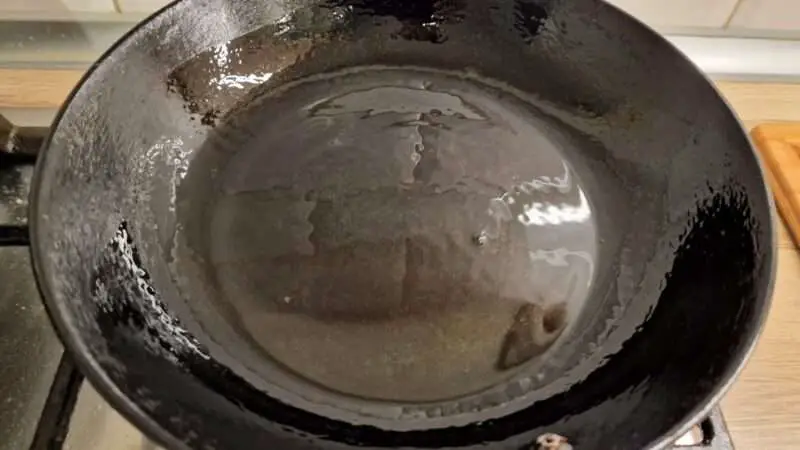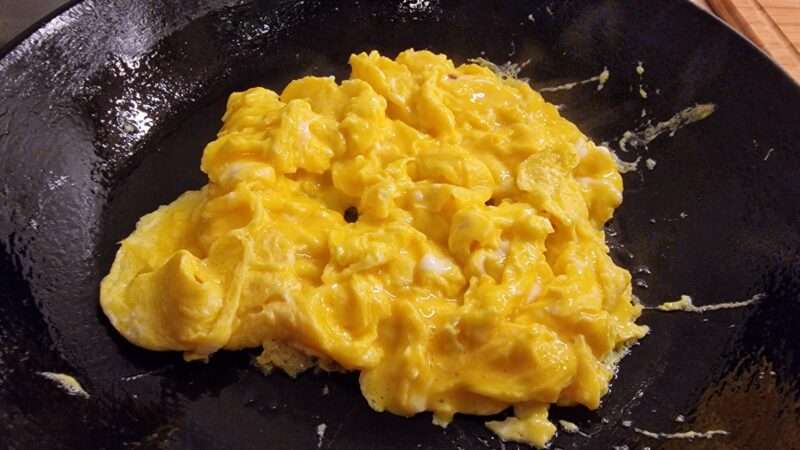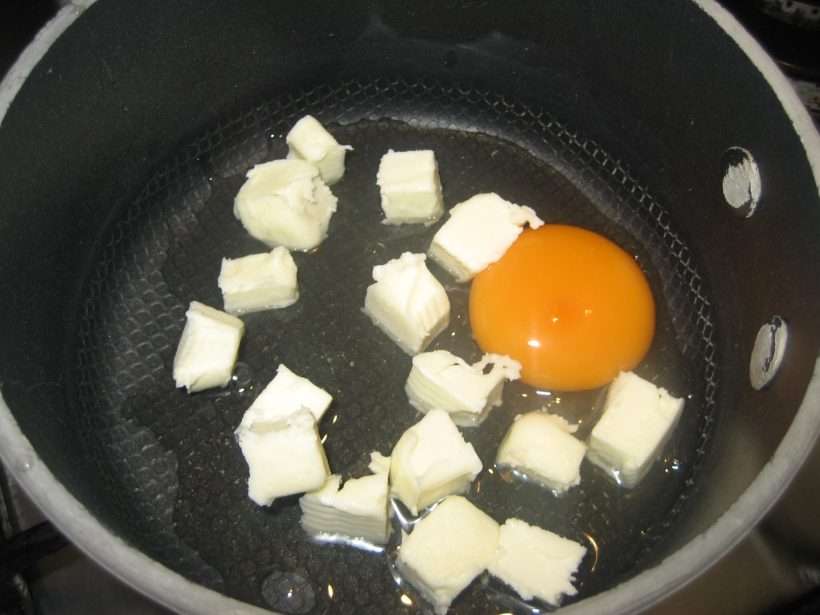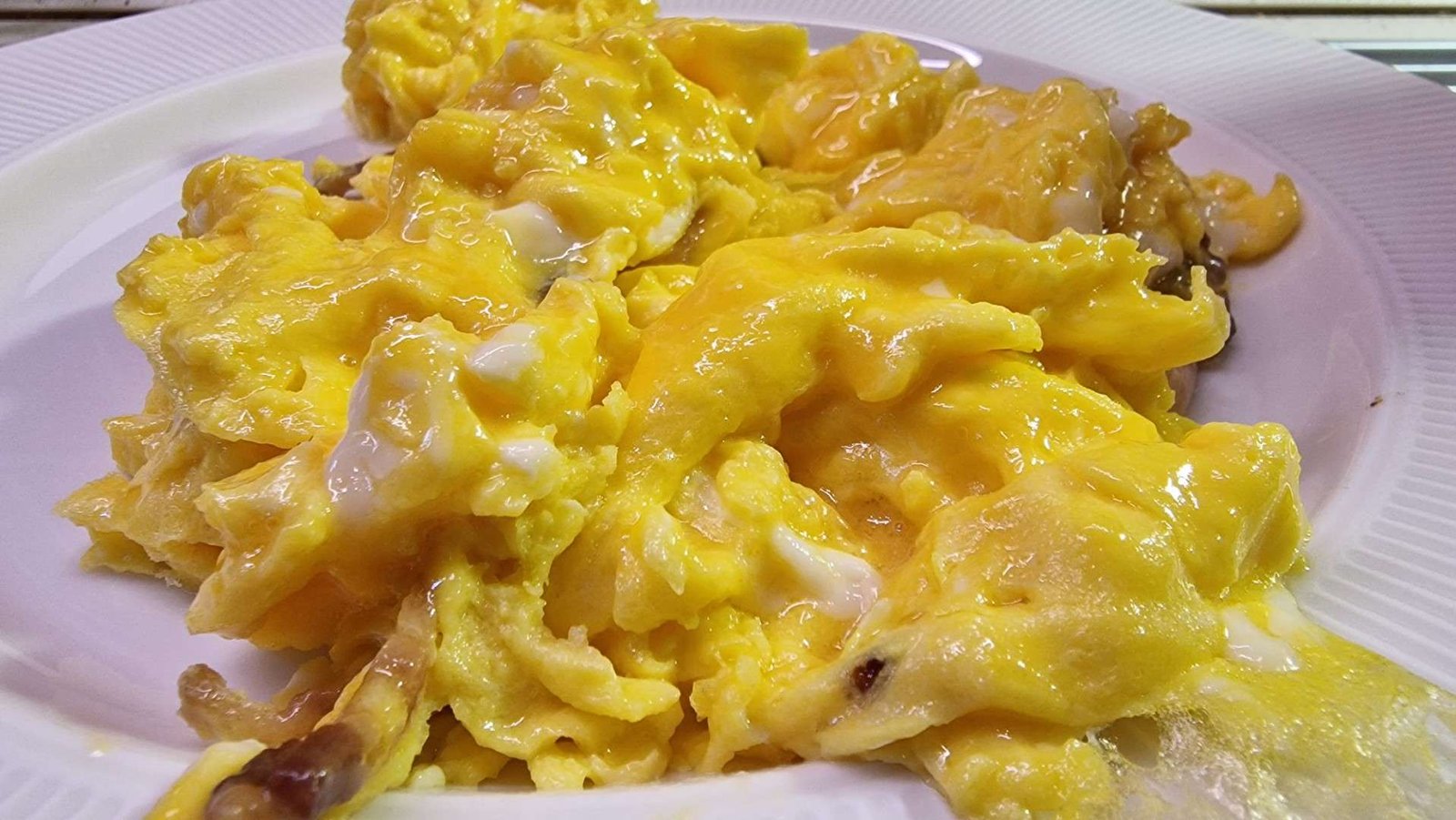The 5 most important tricks of how to make creamy scrambled eggs. Fat, dairy, cooking time, temperature, stirring will make it really fluffy and creamy. Let’s see exactly how.
Scrambled eggs are probably one of the most popular egg dishes around the whole world. Although there are many different ways to prepare it, there is one thing that comes back again and again when searching for the perfect scrambled egg recipe.
What is it that makes scrambled eggs creamy and fluffy? Or in other words, how to make creamy scrambled eggs.
In this article, I’ll share with you the 5 most important secrets of how to make creamy scrambled eggs. These tips can help you master the preparation of this simple dish. If you are looking for scrambled egg recipes however, just follow the link.
The 5 Most Important Secrets of How To Make Creamy Scrambled Eggs
First, let’s take a quick look at the 5 most important things that you need to pay attention to when making creamy, fluffy scrambled eggs. I’ll discuss each step in more details below.

5 Tips To Making Creamy Scrambled Eggs
- Use the right amount of fat
- Do not overcook it
- Add dairy
- Don’t use high cooking temperature
- Relatively frequent stirring
If you pay attention to just one of these, the end result will be already much creamier. But if you follow all 5 tips, you will want to eat creamy scrambled eggs every day!
Using The Right Amount of Fat
This is probably the most important tip when it comes to how to make creamy scrambled eggs. Especially considering the fact that nowadays it is fashionable to talk about fat as pure evil and something that you should avoid at all costs.
Fats, in reality, are not only the real carrier of flavors, but they are also essential for any creamy sensation in your mouth. This is true whether you’re making scrambled eggs or any other food. Not to mention that the general view of fats, as a health concern, is also something that raises a question or two… but that’s another topic.

The exact amount of fat is partly a matter of taste. But as a general rule of thumb, you should use one to one and a half teaspoons per serving (2-3 eggs). That’s about 5 to 8 grams. At first, this amount of fat may seem like a lot in the pan, but just think of mayo. In that case, a single egg yolk takes up 6-7 tbsp of oil, and you really can’t complain about the creaminess.
It’s not a question of creaminess, but it does matter what type of fat you use in terms of flavors too. Contrary to popular belief, vegetable oil is the least recommended. Not only is it an omega 6 bomb, i.e. not healthy, but it adds no flavor to your scrambled eggs. Pork, duck, or goose fat can be perfect, and you can also use butter or extra virgin olive oil. Another tip is to use rendered bacon fat for even more flavors.
If you want some tasteless fat in your scrambled eggs, I recommend using coconut oil as a healthier option.
Do Not Overcook
Scrambled eggs will be dry if overcooked. There are usually two reasons for this. On the one hand, many people are afraid of eggs that are not fully cooked. On the other hand, people doesn’t know the technique to achieve a perfectly creamy, but not runny texture.
I can’t help you much with the first one, I accept if you are afraid of eggs. Just a personal note here though. I’ve been eating soft-boiled, undercooked, or even raw eggs since my childhood, and I’ve never had any health issues because of this.

However, I have two very good practical tips for the second one, the correct cooking technique.
First, never use too high temperature when making scrambled eggs. You can read more about this below.
Second, remove the pan from the heat before your scrambled eggs are ready. That is, when they are still just a bit runny at the top. Turn the eggs with a spatula then a couple of times. The eggs will still cook by the residual heat of the pan itself. That way, the moment you stop stirring, the cooking also stops. This way you can have a 100% control over how well done or creamy your scrambled eggs will be.
Add Dairy

Any dairy product can help a lot to achieve a creamy and fluffy texture to your scrambled eggs.
And I really mean any dairy product here. Traditionally, scrambled eggs are mostly enriched with milk, cream, or butter. But adding some grated cheese, even hard Parmesan, will also produce a creamier and fluffier texture.
Of course, all of these ingredients also affect the taste. So, by using dairy products, you’ll not only make your scrambled eggs creamier, but you can actually create different recipes.
One thought here: don’t overdo the dairy products. The goal here is not to make eggnog, but to enrich scrambled eggs. Use a few teaspoons of cream or other dairy product per egg.
Don’t Use High Cooking Temperature
Delicious and creamy scrambled eggs can be made over either low or medium heat. The most important thing is that the eggs should not be cooked fast, so the cooking temperature shouldn’t be very high.
If you’re making your first scrambled eggs, I recommend using medium-low heat with relatively frequent stirring. Then, as you become more and more experienced, you can raise the temperature.
With some practice, the ideal temperature for making scrambled eggs is somewhere between medium and medium-high. As an example, on our induction top, I use level 6 or 7 out of 9.
Relatively Frequent Stirring
How often you stir it will largely affect the creaminess of your scrambled eggs.
It is a matter of taste how big you want the curds in your scrambled eggs. For a french style texture, stir your scrambled eggs continuously over low heat. For more traditional scrambled eggs, you still have to stir it every 10-15 seconds. This is one of the tricks of creating a creamy texture to scrambled eggs.

What is important is that no matter how you like scrambled eggs, if you want a creamy texture, you should not leave it to cook on its own, but stir it continuously or frequently.


